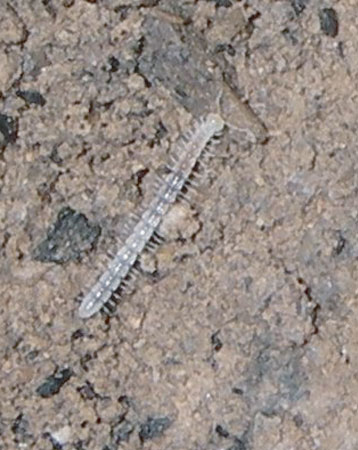Every once in a while something happens that causes little flurries of thought in my head, and such was the case when I decided to take a hike through a section of the Appalachian Trail that runs through the Delaware Water Gap this past Saturday. As I made my way up the hillside, keeping my eyes open for interesting arthoropods and (if I was lucky) mammals, I felt something crawling up the back of my leg. When I stopped I discovered that it was an American Dog Tick (Dermacentor variabilis), trying to make its way to warmer regions. I promptly flicked it off (another one attached itself to me moments later and received the same send-off), but after doing so it struck me that I detected its presence because it was moving the hairs on my legs as it crawled along. I certainly didn’t feel it on my skin, but as it climbed over and pushed aside the hairs on my legs I detected the presence of the little arachnid.
There is some debate as to why we humans have rather sparse body hair. Some believe that it’s in response to the warm climate in which we originated (the Savanna hypothesis), others regard it as a sign of human ancestors once living in water (the Aquatic Ape hypothesis), yet others proposing that it was part of Fisherian runaway sexual selection. The first two are especially contentious and the issue will likely still be debated for some time, but struck me is that if there was some reason that we should lose most of our hair, why didn’t that trend continue? What advantage would there be to being at least partially hairy? Hair serves many functions in keeping unwanted foreign objects like dirt, sand, etc. out of important sensory organs and orifices, but what about our legs? Could it be that we still have relatively hairy extremities because of selection caused by insects that spread disease? To test this we could find some participants of varying hairiness and put ticks on their arms/legs (watching that the little blighters didn’t get away and tuck in, of course) and see if some people are better at detecting them than others. Someone who shaved arms/legs would have to be tested as well, of course.
I could be entirely wrong in my hypothesis and it could be entirely baseless, but I think the role of disease-spreading insects has been largely overlooked when it comes to human evolution (there are exceptions of course, like this recent research). A lot of attention is paid to giant hyena or saber-toothed cats, but I doubt they killed as many humans as disease did, and maybe hair had something to do with who survived and who did not, perhaps even mitigating runaway sexual selection. As I stated before, this is merely blind hypothesis based upon a walk through the woods, but it does make me wonder about the intricacies of our own evolutionary history.















Recent Comments